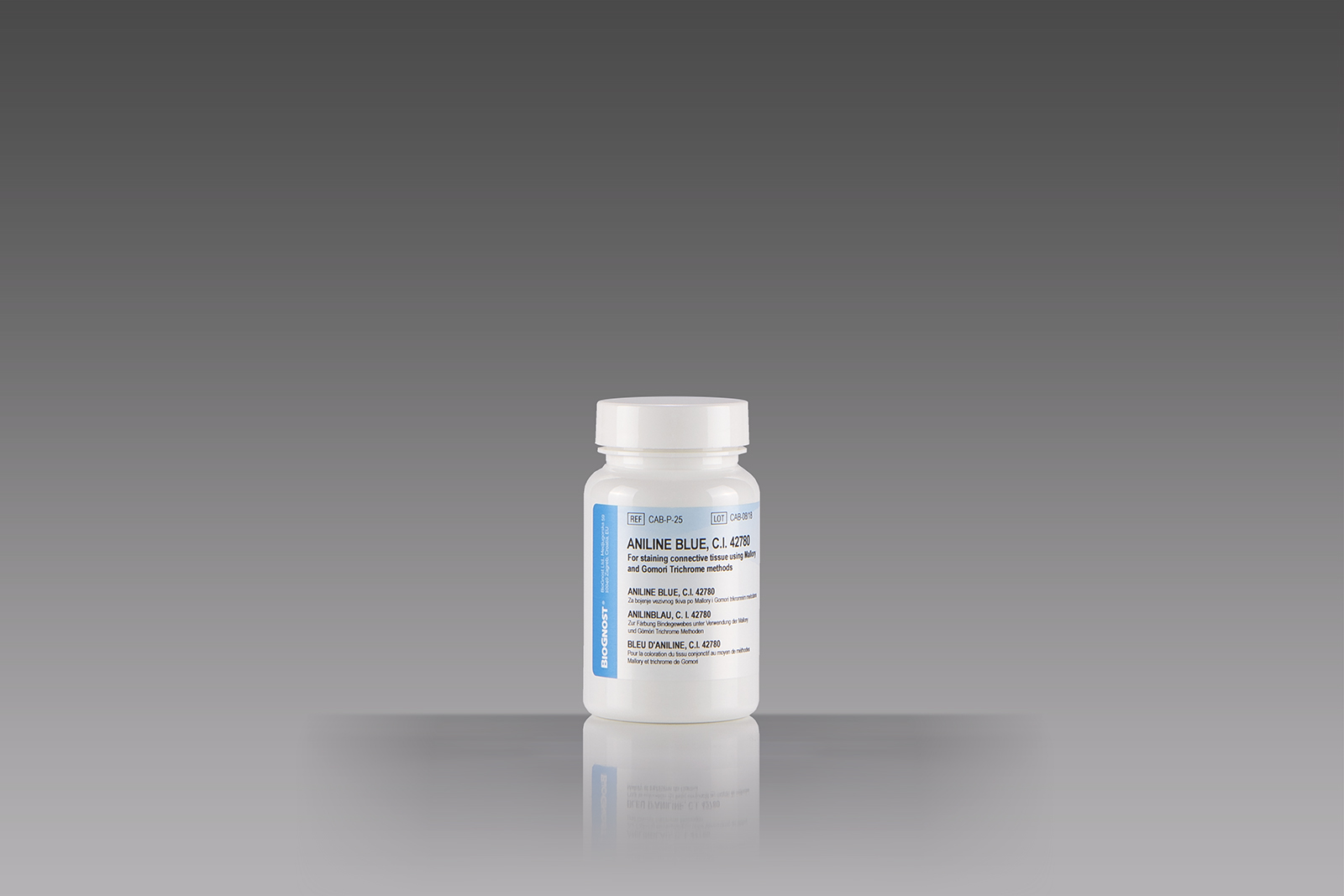Introduction
Histology, cytology and other related scientific disciplines study the microscopic anatomy of tissues and cells. In order to demonstrate a good tissue and cellular structure, the samples need to be stained in a correct manner. Aniline Blue (known as China Blue) is an integral part of many polychromatic stains. Some of them include Heidenhain’s Azan stain, Mallory’s polychrome stain (both contain Aniline Blue-Orange G blend as a part of staining method), Mann’s stain (contains Aniline Blue-Eosin blend), Masson’s stain and Lendrum’s MSB technique that use Aniline Blue and Mallory’s connective tissues stains in the last step (used with the Fuchsin Acid stain). Aniline Blue is used as a contrasting stain in histology and cytology, as well as the pH indicator (pH 10.0-13.0). Aniline Blue can also stain histones, that being the standard method of determining the maturity of a nucleus. The activity of sperm is also determined using the Eosin-Aniline Blue stain.


